Michael Levitt
Biographical
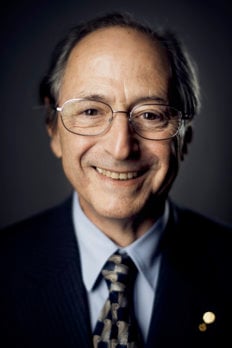
Family Background
I was born in Pretoria, the executive capital of South Africa, on 9 May 1947. My mother, Gertrude, was also born in South Africa, in Johannesburg to parents who had emigrated from Czechoslovakia. My father was born in Plungė, Lithuania, and came to South Africa when he was 10 years old. My childhood memories are of having fun and playing with friends and of enjoying family vacations to the seaside in Durban, or to the Kruger National Game Reserve. School was enjoyable but not particularly challenging. I was good with my hands and remember building a model car from fiberglass, powered by a gasoline engine, most likely when I was younger than 13. I also remember hearing about computers for the first time in 1960 and being impressed that they could play chess.
Last Year in South Africa
My parents separated when I was nine years old and I became even closer to my mother. She was very upset one morning in December 1962 when I came home at 2 AM after staying out with friends. I had being playing snooker (a form of pool) with them and I had forgotten to call home. This triggered an event that changed the course of my life: we decided that I was bored with school and that I should try to finish the last two years of school over the summer vacation – in the southern Hemisphere, this is in January and is equivalent to July in Europe. This undertaking was difficult as I needed to pass the matriculation examinations in many subjects that I did not particularly like. Still my mother was paying a lot for the private tutoring and I took it seriously. In March, I passed the matriculation examinations and my mother arranged for me to attend Pretoria University a few months before I turned 16. There, I studied Applied Math, which was easy enough, although the lectures were in Afrikaans, a language I did not know very well. I had time for older friends and played a lot of Klaberjass (or Bela), a bridge-like card game, during lunch break.
London, 11/1963 to 10/1967
After passing my first year exams, I left Pretoria for London on 18 November 1963 to spend the summer vacation with my uncle, Max Sterne, who developed an effective, safe, and reproducible vaccine against anthrax, and my aunt, Tikvah Alper, the discoverer of the prion. This vacation trip may well have been a treat to compensate for how hard I had worked the previous summer vacation.
London was a shock as it seemed so cold and grey but I really enjoyed being close to my uncle and aunt who were established scientists. I also enjoyed a close friendship with a Swiss girl who was an Au Pair in their Earl’s Court home. I quickly decided not to return to South Africa but to continue studying in London, to which my mother agreed. This meant passing the A-level exams in three subjects, so within a month I was studying at Acton Technical College, where I made many new friends. This additional work was necessary even after a year’s study at Pretoria University, as the South African matriculation exam was at the same academic level as the O-levels in England. I needed to work hard but managed to get good marks in three A-level subjects: math, applied math and physics. This was enough to earn me a place at a good university where I would start in September 1964, less than two years after playing snooker and staying out too late.
Meanwhile, my mother came to England with my sister and my brother and our two dogs. This was a much harder transition for her, as she had had a life of privilege in South Africa and now had to earn money to support us. However, in the end the move was good for her children and for her too (my mother became a school teacher at the age of 50 but is still teaching almost 50 years later). For the first few months in London I spent a lot of time glued to my uncle and aunt’s TV set watching the 1964 Winter Olympics. There was no TV in South Africa and I had never seen snow. I also watched the BBC TV lecture series “The Thread of Life” by John Kendrew, a newly minted British Nobel Laureate (Chemistry, 1962). This was a remarkable introduction to molecular biology made just a few years after it became clear that life was highly structured in space and time, just like a clock, but a billion times smaller and infinitely more complicated. I became enamored by the potential power of physics to be useful for life sciences, something that had seemed unimaginable.
This interest in the physics of living system led to my choosing to study at King’s College London, where the tradition of biophysics was strong and the glory of Maurice Wilkins sharing the 1962 Nobel Prize with Crick and Watson still fresh. Like school, university was mostly about friends and fun in what was becoming swinging London. I shared a flat in South Kensington with two classmates and spent the summers of 1964 and 1965 in Copenhagen washing dishes and having a wonderful time. College was easy as it was only physics and math and there was almost no classwork apart from exams. I passed the exams by borrowing the meticulous notes of a classmate and hand copying them. My mother sent me on a computer course at Elliott Computers in Borehamwood in North London, where I wrote my first program using paper tape. I had even greater exposure to computing in the summer of 1966 when my Aunt Tikvah, a radiation biologist at Hammersmith Hospital, helped me get a summer job at the Radiation Laboratory in Berkeley, California. There I wrote my first FORTRAN program using punched cards, a huge improvement over paper tape. I also had the most amazing and diverse experiences. It may have been the Swinging Sixties in London, but London was tame compared to Berkeley at the start of the Free Speech movement.
Getting Accepted by Cambridge
These distractions did not deter me from my ambition to do a PhD at the Laboratory of Molecular Biology, the fabled MRC lab in Cambridge where the four British Nobel Laureates had all worked. Thus, in the winter of 1967, I wrote to John Kendrew asking to be considered for entry after graduation (and a summer vacation), in September 1967. His reply was disappointing, saying that there was no space and they could not even consider me. At this point, my two classmates at King’s College, Ivan Bradbury and Peter Bostock, both destined to become very successful science entrepreneurs, convinced me to persist. In my reply to Kendrew, I asked if there was any possibility to join the lab a year later. This time he suggested I come for an interview, which went well, but led to another disappointment: I would be told in a year’s time whether I would be accepted.
This meant wasting a year, and again Ivan and Peter intervened and said I need to go to Cambridge to try to get an answer. Since I was shy by nature, this was really hard for me, but I put on my suit (from my Bar Mitzvah seven years earlier), and drove to the lab in my mother’s red Mini Estate. There I waited outside the offices of Max Perutz and John Kendrew, joint heads of the Structural Studies Division. Max Perutz came towards his office and I bravely accosted him in the corridor saying that I needed to talk. He graciously, and perhaps also somewhat embarrassed, asked me to come into his office. There I said that the uncertainty about my future PhD was wreaking havoc on my ability to study for my final exams (an exaggeration but I needed to justify my rude intrusion). Max said that he needed to discuss the matter with Kendrew and that I should phone on the following Monday.
This did the trick and influenced my life beyond all expectations. When I called a few days later, they had decided to accept me in 1968 and Kendrew said that he would help me find something to do in the interval. Elated, I started to plan a grandiose year of travel that involved Paris, Boston and perhaps Tokyo. This was not to be: Kendrew said that I had to go to the Weizmann Institute to work with Shneior Lifson. Kendrew was on the Scientific Advisory Board of the Institute and had heard about Lifson’s consistent force field. I was not convinced, but then Kendrew sweetened the deal by getting me a Royal Society Exchange Fellowship that was meant for postdoctoral fellows and not fresh graduates such as I was (this was possible as the program was in its first year and there were no candidates). For me, the fellowship meant one thing: four times more money that I had had as an undergraduate. Before I left for Israel, Ivan and Peter helped me spend sixty percent of the money on tailor-made suits, hand-made shirts, silk ties, hand-knitted Lisle socks, a Brenell tape recorder, and top-of-the-line skin diving equipment.
Watershed Year in Rehovot, 10/1967 to 8/1968
I arrived in Israel by boat on Friday 13 October 1967, on the eve of Yom Kippur, and had to spend two nights in a hotel in Haifa so that I could release my trunks from Customs before proceeding to Rehovot. There, Shneior and Hannah Lifson accepted me as family and helped me in every possible way. I moved into the student residence and started to work with Arieh Warshel, who was already married but who also lived in Clore House. There is little doubt that the subsequent year was the real watershed in my life (perhaps because I had arrived on Friday the 13th?) with three momentous events: (1) I wrote the computer program with Arieh that enabled us to use the consistent Force Field to calculate properties of any molecule. (2) I met my wife, Rina, at a Christmas Party, 10 weeks after I arrived in Rehovot; (3) I applied Cartesian coordinate energy minimization to the two known protein x-ray structures. A vivid memory is checking the second derivative matrix of cyclohexane by printing out the 54-by-54 table of analytical and numerical derivatives and covering the floor with these computer printouts. I also remember building, with Yuval Eshdat, a model of lysozyme from brass Watson-Kendrew components. This was so tedious that putting the coordinates in the computer seemed obvious. Later that year, in August 1968, Rina and I married in Israel and together drove to London from Piraeus with my mother, sister Ruth Rettie and brother Jonathan Levitt, in the same red Mini. I was just 21 years old and had planted the seeds for a full family life as well as decades of future scientific research.
Phd and Children in Cambridge, 8/1968 to 9/1972
We arrived in Cambridge in September 1968, rented a small house in Derby St., Newnham (opposite the bakery that is still there) and I started to work at the Laboratory of Molecular Biology (LMB) under Dr. Robert Diamond, the supervisor assigned to me by Kendrew and Perutz. Diamond was a theoretician and computer expert focused on developing tools to improve modeling of protein structure from electron density. His masterwork was a program known as Real Space Refinement, which moved the atoms of a putative protein structure to better fit the electron density. Space was limited at LMB so I shared a 200 sq. ft. office with Tom Diamond, Tom Steitz, a postdoc who would go on to solve the structure of the ribosome and share the 2010 Nobel Prize in Chemistry, and Lynn Ten Eyck, also a postdoc and a computer wizard. I looked so young then (Figure 1)!
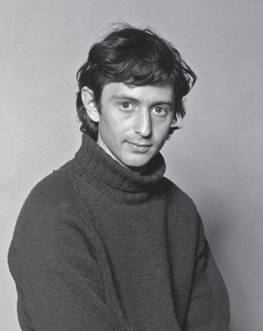
Each year in September, there are annual lab talks at LMB that can only be attended by lab members. There, for the first time, I heard about tRNA and felt the excitement voiced by Francis Crick, Sydney Brenner and Aaron Klug. As I reckoned that I could complete my PhD using the methods and program I had already developed in Israel, I focused on modeling tRNA working closely with Francis and Aaron. The resulting model was wrong in overall shape, but, right in many of the details and resulted in my second paper being a sole-author paper in Nature, submitted on my behalf by Crick; it was reviewed, accepted and published in 23 days!
Very soon after getting to Cambridge, we discovered that Rina was pregnant. I built models of tRNA at home in our upstairs work room. As a result I had to lower the space-filling (CPK) model of tRNA weighing some 60 lbs out of the window. Our first son, Daniel, was born in May 1969. When he was three months old, Rina, who has a degree in biology, went to work to support the family. My PhD studentship was definitely not sufficient. We did not want to leave Danny with a babysitter all day, so I decided to become a theoretician and work from home.
For the next two years, I cycled to work at LMB in the morning at 9 AM. and returned at 1 PM., so becoming a telecommuter well before the term was known. We did not have a telephone at home and certainly not a computer terminal. As a result, I would carefully plan the programs I needed to type in on punched cards, and spend the four hours at the lab furiously typing cards. Still, I did take a half-an-hour tea break, which was almost compulsory. Looking back, I am amazed that the senior scientists at LMB accepted this scheme, as regulations were quite strict and formal in Cambridge those days. Before Danny was born, I had thought of trying my hand at experimental work and spent a couple of months with Brian Clark (now at Aarhus) looking at tRNA chemical protection patterns so as to identify additional base pairs. I did not have the skills needs for experimentation, nor did I believe my own results.
My PhD thesis, defended at the end of 1971, was ambitious with 10 chapters that should have been published; only two of these ever became papers. Computational structural biology was a new field then and it was greeted with great skepticism. My attempt to publish chapters 3 and 4 of my thesis, which laid out the methodology of computing analytical first and second derivatives of any molecule with respect to Cartesian or torsion angle coordinates was ridiculed by a reviewer who said that had it been a term paper in an undergraduate course, it would have gotten an “F.” In retrospect, I suppose that I should have fought harder to get these papers published but they did not seem very interesting to me. I do remember that in August 1971 we had planned a camping vacation in Italy but my thesis work was progressing so erratically that I wanted to cancel the trip. Rina prevailed and to my amazement, a few days after we returned, feeling very relaxed, I was able to solve the problems that had been holding me up, so that I was able to finish up and start writing my thesis by December.
I stayed on as a staff member at LMB until September 1972 and then we went back to Israel so that I could work with Shneior Lifson at the Weizmann Institute. By now our second son, Reuven, had been born in June 1972. Rina had stopped working a year earlier as my MRC stipend had been replaced by a lucrative fellowship from Gonville and Caius College, Cambridge and we were able to buy our first home near the lab thanks to a college loan that covered the down payment. Knowing that I would be supported by a generous European Molecular Biology Organization (EMBO) fellowship in Israel, we bought a brand-new Citroen GS, free of import tax, for what was then almost a year’s salary and traveled in it to Israel.
First Post Doc with Shneior Lifson at Weizmann 9/1972 to 8/1974
Our first experience in Israel was the October 1973 war that occurred two months after we arrived. My Israeli colleagues, including Arieh Warshel, with whom I was collaborating again, were called up leaving me almost on my own with the computer. This was not an advantage and I started to be become very depressed. When Arieh returned from major tank battles on the Golan Heights, he was much more depressed than I and with much more reason. We spent hours each day talking about work as an escape from reality for us both. This was the start of a very fruitful collaboration. In a few short months it laid the basis for multiscale models in chemistry.
Our first collaboration was a coarse-grained model of a protein in which the 10 atoms in a typical residue are replaced by one of two interaction centers. How we dared to leave out 90% of the atoms is an interesting story. The early 1970s were the golden period of NASA’s space exploration, with six manned missions to the moon between 1969 and 1972. We were trying to tackle protein folding, and it seemed that it could be done by hand using the heavy plastic space-filling models, but gravity kept on weighing things down. Half joking, we speculated that this could best be done on a spacecraft with its zero gravity. Suddenly, we had the idea to simulate simplified molecular models as is they were in a spacecraft and drastically reduce the atomic structure of a polypeptide. This work went ahead quickly and by October 1974 we had submitted the paper that appeared in Nature in February 1975.
Our second collaboration occurred in a more systematic manner. Chapter 9 of my PhD thesis and one of the chapters that was published, albeit in conference proceedings, had shown that the enzyme lysozyme was too soft to mechanically deform the substrate as had been proposed by David Phillips. Instead I postulated that the strain would be electrostatic rather than steric (See Nobel Lecture). As empirical force fields, both then and today, use fixed point charges on atoms, electrostatic strain cannot be modeled. Arieh and I discussed this at length and then he proposed combining quantum mechanics with classical mechanics. This was Arieh’s area of expertise but even then getting this to work took a long time and this paper was not submitted until September 1975 for publication in J. Mol. Biol. in February 1976.
Back to Cambridge, 8/1974 to 8/1977
In September 1974 we returned to Cambridge and shortly afterwards Arieh joined me there for a year. Sadly, he had been refused tenure by the Weizmann Institute and had to leave. In Cambridge we continued to work on the hybrid QM/MM force field and a breakthrough came when we realized how to represent the surrounding water as Langevin dipoles. At the end of his year with me, Arieh moved to the University of Southern California where he is to this day. I had a permanent position in Cambridge and started several diverse collaborations that included the first paper of a long collaboration with Cyrus Chothia (still at LMB) entitled “Structural Patterns in Globular Proteins,” a paper with Jonathan Greer, whom I had visited at Columbia University in New York for the summer of 1975, entitled “Automatic Identification of Secondary Structure in Globular Proteins,” and a paper with Tony Jack entitled “Refinement of Large Structures by Simultaneous Minimization of Energy and R Factor.” Tragically, Tony died on 14 July 1978 aged 30 and before his paper was published.
While all this paper writing was going on, our third son Adam was born in May 1976 (Figure 2). Although we owned our house, it was increasingly difficult to make ends meet. I remember that when our beloved Citroen GS was a total loss after a minor accident, in February 1976, I was thrilled as the insurance money made a huge difference to our finances for the next six months or so. Seeking a more permanent solution, we started to think about a second postdoc in the US. I first tried to get a postdoctoral position at Harvard with Martin Karplus, whom I had met in the summer of 1976 in Paris at the famous CECAM Summer School of protein dynamics [XX], but he showed no interest. Then I thought of going to work with Michael Rossmann in Purdue until we warned told about the Midwest climate.
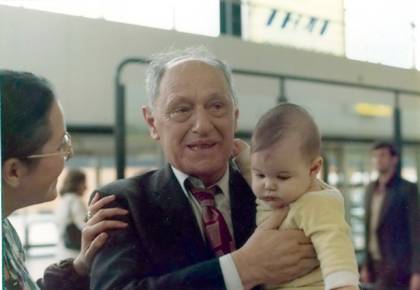
Second Postdoc with Francis Crick at Salk, 8/1977 to 8/1979
Luck struck again when Leslie Orgel from the Salk Institute suggested I go there. He also told me that Francis Crick would be moving to the Salk Institute so I could work with them both. Leslie and his wife Alice were so kind to us and arranged a house on Coast Blvd. in Del Mar, north of the Salk Institute and a very short walk from a glorious beach. California was wonderful for us all. Rina started to draw and paint with Odile Crick, the children loved their schools and I generally worked from home, staying with Adam, a little toddler. The Salk Institute had no computer, so I first tried to use the large machines at the Health Science Center at UCLA in Los Angeles. This meant 4 hours driving and a night without sleep, so something needed to be done. I applied for two years of NSF support and got $110,000 that I spent to buy a VAX 11/780, Digital Equipment Corporation’s wonderful new computer with virtual memory. The Salk Institute did not want to house the machine, so it was kept and maintained at a local company with the understanding that I would be the sole user for the first year and then the machine would be theirs. The only terminal to the machine was a fast 120 character per second teleprinter connected to a very expensive 60 bytes/second leased line to our beachside home. I was ecstatically happy having such a powerful machine all to myself and developed a routine of working at home except for lunch time when I would drive to the Salk to join Francis Crick and Leslie Orgel. By this time, working anywhere except at home was becoming more and more difficult.
Weizmann Institute, 8/1979 to 7/1986
Towards the end of my stay at the Salk Institute, I applied for a permanent position at the Weizmann Institute. Leaving Cambridge would be hard as they had always treated me in the best imaginable manner but Rina wanted to be closer to her parents and I looked forward to the warm climate. I had hoped to be able to help Arieh Warshel to get tenure there so we could work together again. Francis Crick wrote a joint letter of recommendation for us comparing Levitt and Warshel to Crick and Watson. Unfortunately, the Weizmann Institute was not persuaded by it and we moved there without the Warshels in September 1979, again by car and boat but this time with a cheap and very practical Renault 4.
We settled in quickly and Rina became a full-time teacher for one year before deciding to pursue her art more seriously by studying for four years at Avni Art School in Tel Aviv. Punched card were now a thing of the past but terminals were too expensive to have at home so I actually worked at the Institute, coming home with the children in the early afternoon. Michael Sela, then president of the Institute, supported me tremendously. In 1980 he appointed me chair of the Department of Chemical Physics and at about the same time helped me get elected to EMBO so that I could serve on the Scientific Advisory Committee of the European Molecular Biology Laboratory (EMBL) in Heidelberg. The Weizmann Institute also bought me a Vax 11/780 computer, a color frame buffer display and a high-speed Vector General black & white display. With these wonderful conditions, I produced a series of nine sole-author papers in three years, something of which I remain proud. With Ruth Sharon, I focused on solving the very hard problem of simulating protein molecular dynamics in a large box of explicit water molecules. Computers were still slow and we had to truncate electrostatic interactions at short range while still conserving energy.
Each summer we traveled as a family to a destination where I was a paid visiting scientist, including Cambridge, Washington, San Francisco, London and Boston for the summers of 1980 to 1985). This last trip was for me alone and it was hard on Rina and all the family, as the summer in Israel was terribly hot. We did not have air conditioning and Rina did not think of buying additional fans. As a result, Rina wanted us to spend the next year on sabbatical in London. I was really happy to keep on working in Israel but could not refuse, especially since my mother, brother and sister all live in London.
Sabbatical in Cambridge, 7/1986–7/1987
Although, I was to work in Cambridge, we decided to live in Ealing, a suburb of London near my mother. This meant much better schools for the children and the pleasures of a big city for us all. It also meant I had to commute by bus, underground, train and bus, which took 2 to 3 hours each way but I only went to Cambridge three days a week. Laptop computers did not yet exist, so I did a lot of reading and perhaps thinking. In Cambridge, I mainly worked on getting the work on molecular dynamics in water ready for publication but also had a ‘quickie’ publication with my all-time hero, Max Perutz, entitled “Aromatic Rings Act as Hydrogen Bond Acceptors.” Otherwise, I enjoyed a rather quiet time with family and the cultural and artistic pleasures of London.
The ‘trouble’ started when our long-time friend Bill Eaton came to London for a day in November 1986. Bill had just been put in charge of NIH intramural grants directed towards treating the looming AIDS/HIV health crisis. Bill talked to Rina and said that I really needed to leave Israel and spend a few years at NIH. Until then, the idea of leaving Israel had never been considered but now we thought about it seriously. We were invited to an interview at NIH and on the next day I arranged an interview at MIT’s Whitehead Institute, where I had spent the summer of 1985. While I was in Cambridge (Boston), Steve Harrison, a long-time friend, hosted a cocktail party for us in his home. By pure chance our mutual friend Roger Kornberg telephoned from Stanford and was surprised to hear I was thinking of leaving Israel. He immediately said that if I left, we had to come to Stanford.
Leaving the Weizmann Institute was actually very hard and we could not decide what to do until we were helped by preemptive action on the part of the some members of the Chemical Physics department to encourage me to leave. This made it so much easier to ask for three years leave of absence to move to Stanford.
Stanford from 7/1987
My dominant memory of coming to Stanford was how easy everything was. It seemed as if we had grown up on Jupiter and then moved to the Earth’s gravity. We were able to buy a beautiful house on the Stanford campus, our oldest son attended Berkeley and the other two sons attended exceptionally good local schools. Rina started making large monotypes under the direction of the wellknown Bay Area artist Nathan Oliveira. I decided to start a group of my own, something that I had shied away from until then, feeling I was not yet ready to direct others. I also liked – and still very much like – to do all aspects of the research myself. When I joined Stanford, I also became a consultant for Protein Design Labs and this helped in the development of current anti-cancer drugs (see Nobel Lecture). After a couple of years at Stanford, I decided to form my own small company, Molecular Applications Group, to sell molecular graphics software for the Mac II computer. I ran the company alone for two years and was then joined by my brother-in-law, Dor Hershberg. Venture capitalists soon invested and we had some exciting times until the market crashed in 2000. Our VCs were wonderful company and fun to talk to, but I wish they had been more keen to make money, a complaint that is very rare in the super-charged atmosphere of Sand Hill Road.
In June 1990, we decided to spend more time in Israel so that our two older sons could start their army training. We returned to the Weizmann Institute and the apartment that they had so kindly kept for us while I was away on leave of absence. At the start of Operation Desert Storm in January 1991, I had to return to Stanford to teach and it was terribly hard to leave my family while missiles were falling and we feared a nerve gas attack. It also became clear that I would need to arrange a proper joint appointment between Stanford and the Weizmann Institute. The then president of the Institute, Haim Harari, knew Stanford well, and he did his best to help me. Alas, the same people who had helped me leave four years before, raised objections that quickly made me realize that one academic affiliation is enough.
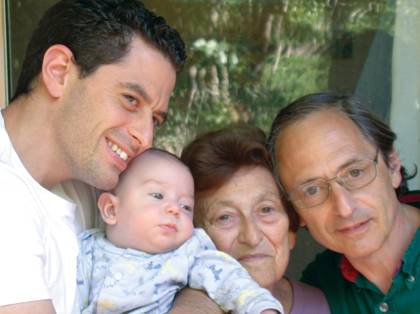
We bought and renovated an apartment in Rehovot and left the protective cocoon of the Institute to enter Israel proper. This was surprisingly difficult but we now know how to be good neighbors. It took about six years for all three boys to finish their army service, and during this time Rina was mainly in Israel and I was mainly in the air between Israel and Stanford. After completing their service, our sons moved back to Stanford and our center of gravity moved there too. I was chair of the department in Stanford from 1992 to 2004, a task that I found very easy indeed.
Last Decade from 1/2003
Rather surprisingly, the last ten years have been the most enjoyable in my life. In 2003 I won a Blaise Pascal Sabbatical Chair in Paris and we had a wonderful year there in 2003 and 2004 (Figure 4). Our first grandchild, Barak, was born on March 2003 (Figure 3) and when he moved back to Israel with his parents in 2004, Rina decided that she wanted to move back too. She said it was a shorter trip from Paris to Israel than to Stanford. Initially it was hard for me to balance the requirements of my fairly large Stanford group, travel and doing my own science, but I became better at it with time. When I turned 60 in 2007, things seemed to get even better. I started to hike with a Bay Area group and have done some amazing trips, the hardest of which was in Patagonia last year (130 km in 13 days carrying 17 kg). I generally became much more excited by physical activity including a risky, but magical, solo sea kayak trip in the Swedish archipelago in 2011 (see Nobel Lecture). After a break of 15 years, I again started writing solo-author papers that are not reviews, with one in 2007 and another in 2009. A couple of years ago, I started going to a personal trainer two or three times a week and have never felt fitter. Meanwhile, both of our two younger sons have also married and has each given us a grandchild, a boy and a girl.
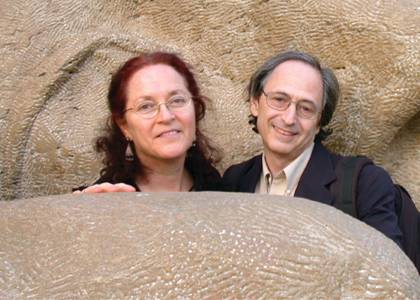
Life was wonderful and just when I thought things could not get any better, I was woken at 2:16 AM on the morning of 9 October. The transition from being mere mortal to a Nobel Prize winner is a great surprise (in fact, I have taken to saying “No one should expect the Nobel Prize” to myself over and over again). Still, so far it has been a magical journey. Nobel Day in Washington was perfect training for the harder Nobel Week in Stockholm and one cannot fail to be impressed and honored by the grace and hospitality shown to us. It felt like a fairy tale and we relied on our Nobel Attaché, Maria Velasco, and our Driver, Estelle Savalle, to keep us from floating away buoyed up by our swollen heads. The banquet (Figure 5) and after-party Nobel Nightcap was so perfectly balanced by our Royal Palace dinner the next night, both wonderful but in such different ways. We had planned to go hiking in Patagonia on 11 December (as I wrote before, “No one should expect the Nobel Prize”) but went instead three weeks later in January. This helped us to get our feet back on the ground, although the attention, especially in Israel, seems to never end. For me, the best antidote is to work by myself, being creative by analyzing data, making figures, writing computer programs and even writing this biography.
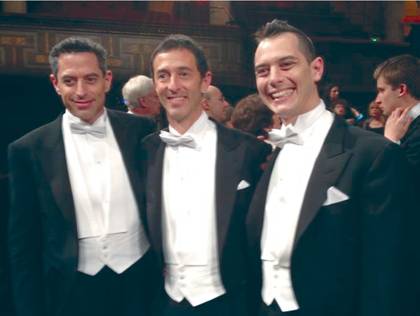
It is not easy when people start listening to all the nonsense you talk. Suddenly, there are many more opportunities and enticements than one can ever manage. I have decided to be selective but in a random way, so that I get a taste of everything. I have also adopted a pet project, namely to try to ensure that the young scientists today get all the opportunities afforded to us baby boomers. Failure to do this will dry up the well of innovation that is so important for all aspects of a modern society.
This autobiography/biography was written at the time of the award and later published in the book series Les Prix Nobel/ Nobel Lectures/The Nobel Prizes. The information is sometimes updated with an addendum submitted by the Laureate.
Nobel Prizes and laureates
Six prizes were awarded for achievements that have conferred the greatest benefit to humankind. The 12 laureates' work and discoveries range from proteins' structures and machine learning to fighting for a world free of nuclear weapons.
See them all presented here.
